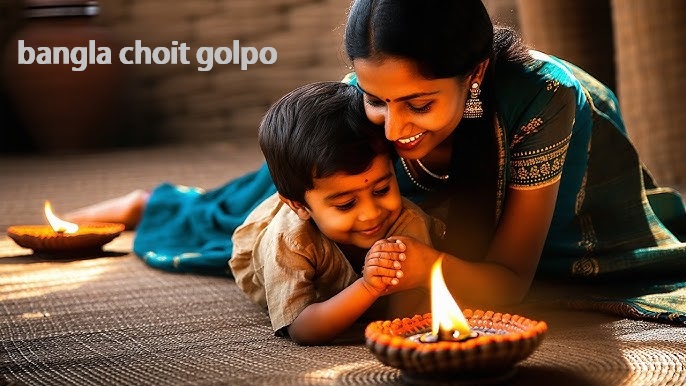Bengali literature is synonymous with timeless beauty, profound emotions, and cultural depth. Among its many treasures, Bangla choit golpo (Bengali short stories) holds a special place in the hearts of readers. These stories encapsulate the essence of life in Bengal, blending tradition, modernity, and universal human experiences.
Whether you are a fan of Rabindranath Tagore’s evocative storytelling, Sarat Chandra Chattopadhyay’s realism, or contemporary voices reflecting the dynamism of modern Bengal, Bangla choit golpo offers something for everyone. This article explores the history, themes, and significance of these stories while providing recommendations for must-read collections.
What Makes Bangla Choit Golpo Unique?
- Rich Cultural Context:
Bengali short stories reflect the region’s vibrant traditions, festivals, and everyday life. Writers use this backdrop to create relatable, immersive narratives. - Universal Themes:
Though rooted in Bengal, these stories often tackle universal themes like love, loss, struggle, and hope, making them accessible to readers worldwide. - Diverse Styles:
From the poetic prose of Tagore to the gritty realism of Manik Bandopadhyay, Bangla choit golpo showcases a wide variety of storytelling styles. - Compact Yet Profound:
Short stories are ideal for conveying complex emotions and situations in a concise format, leaving a lasting impression.
The Evolution of Bangla Choit Golpo
The Tagore Era:
Rabindranath Tagore, the Nobel laureate, revolutionized Bengali short stories. His works like Kabuliwala and Postmaster exemplify poignant storytelling with simple yet impactful language. These stories delve into relationships, human emotions, and the subtle intricacies of life.
Realism and Social Issues:
Sarat Chandra Chattopadhyay and Manik Bandopadhyay brought a stark realism to Bangla choit golpo, addressing poverty, class struggles, and social injustices. Stories like Haraner Nat Jamai reveal the harsh realities of life in rural Bengal.
Modern Voices:
Contemporary authors like Jhumpa Lahiri and Taslima Nasrin have expanded the horizons of Bengali storytelling, incorporating themes of migration, identity, and feminism into their works.
Popular Themes in Bangla Choit Golpo
- Love and Relationships:
Love, in all its forms—romantic, familial, or platonic—is a recurring theme in Bangla choit golpo. Stories explore the depths of human connections and the complexities they bring. - Social Commentary:
Bengali short stories often serve as a mirror to society, addressing pressing issues such as caste discrimination, gender inequality, and political upheaval. - Nostalgia and Identity:
Many stories evoke nostalgia, especially for readers living away from Bengal, providing a sense of belonging and cultural pride. - Folklore and Fantasy:
Bengali storytelling frequently incorporates elements of folklore, mythology, and magical realism, offering readers an escape into enchanting worlds.
How to Start Reading Bangla Choit Golpo
- Classics by Rabindranath Tagore:
- Kabuliwala
- The Hungry Stones
- The Homecoming
- Works by Sarat Chandra Chattopadhyay:
- Bindur Chhele
- Haraner Nat Jamai
- Contemporary Collections:
- Jhumpa Lahiri’s Interpreter of Maladies
- Short story anthologies from modern Bengali writers.
- Translated Works:
For non-Bengali readers, many Bangla choit golpo are available in English and other languages, allowing a global audience to appreciate these gems.
Why Read Bangla Choit Golpo?
- Cultural Enrichment:
These stories are a gateway to understanding Bengali traditions, festivals, and daily life. - Emotional Depth:
Few literary forms can evoke emotions as powerfully as a well-crafted Bengali short story. - Brevity with Impact:
Perfect for readers seeking meaningful narratives without committing to lengthy novels. - Language Mastery:
For Bengali learners, reading Bangla choit golpo improves vocabulary and understanding of idiomatic expressions.
Writing Your Own Bangla Choit Golpo
Inspired by these masterpieces? Here’s how to get started:
- Choose a Theme:
Decide on the central idea—love, family, nostalgia, or societal issues. - Set the Context:
Paint a vivid picture of the setting, whether a bustling Kolkata street or a serene village in Bengal. - Focus on Characters:
Create relatable, multi-dimensional characters that resonate with readers. - Keep It Concise:
The charm of a short story lies in its brevity. Avoid unnecessary details and focus on the core message.
Conclusion
Bangla choit golpo is more than just literature; it is a celebration of Bengali culture, emotions, and storytelling prowess. These short stories have the power to transport readers to the heart of Bengal, offering profound insights into life’s many facets.
Whether you are exploring Bengali literature for the first time or revisiting familiar favorites, the world of Bangla choit golpo promises an enriching journey. So, pick up a collection today and dive into the magic of these timeless tales!
